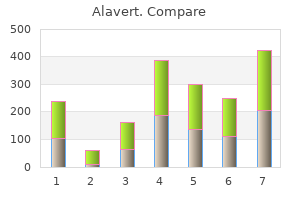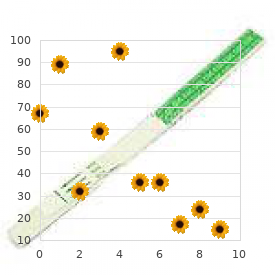"Alavert 10mg amex, allergy forecast georgetown".
By: V. Nerusul, M.A., M.D., M.P.H.
Deputy Director, UCSF School of Medicine
Significant iron loss also occurs as a byproduct of hemodialysis allergy testing for penicillin 10mg alavert visa, and folate stores may be compromised by loss of this dialyzable vitamin allergy medicine for kids buy alavert from india. Aluminum toxicity interferes with iron metabolism allergy medicine liquor store buy alavert online from canada, and a microcytic anemia may develop in patients whose dialysate baths contain high concentrations of this metal allergy head congestion order alavert 10mg with visa. Anemia in liver disease may also have its origin in the several other insults that often accompany hepatic damage. Alcohol, with its effect on folate metabolism, may create a macrocytic, megaloblastic anemia; the same toxin may interfere with heme metabolism and produce a sideroblastic anemia. A metabolic product of alcohol, acetaldehyde is a direct inhibitor of erythropoiesis in vitro. Iron deficiency is also not uncommon in liver disease because of blood loss from varices, alcohol-induced gastritis, and the coagulopathy resulting from defective synthesis of coagulation factors. An anemia, usually normocytic but sometimes macrocytic, accompanies hypothyroidism because of physiologic responses to decreased metabolic needs (see Chapter 239). Menometrorrhagia occurs frequently in hypothyroidism and can lead to iron deficiency anemia. Anemia is not a feature of uncomplicated diabetes mellitus but usually occurs in the course of the disease as renal complications develop. Severe hemolysis may occur in diabetic ketoacidosis if significant hypophosphatemia appears following insulin treatment. Deficiencies of stem cells, as occurs with aplastic/hypoplastic anemias, cause a normochromic, normocytic (sometimes slightly macrocytic) anemia that is usually part of a pancytopenia with attendant leukopenia and thrombocytopenia 855 (see Chapter 160). Leukemias and lymphomas may replace and inhibit the marrow and cause normochromic, normocytic anemia. Low values for mean corpuscular volume and hemoglobin concentration generated by the electronic counter delimit a small number of possible lesions as the cause of this type of anemia. Iron, as the core of the hemoglobin molecule responsible for the oxygen-carrying capabilities of blood, is the most precious element within the body; an efficient system of conservation and recycling of this valuable resource serves to guarantee the amount of iron necessary for daily hemoglobin synthesis. Storage depots of iron (as ferritin and hemosiderin) exist within the reticuloendothelial cells of the liver, spleen, and bone marrow and the parenchymal cells of the liver, and these stores are depleted before any restriction in hemoglobin synthesis occurs. Iron deficiency anemia therefore represents the final temporal development in the chronology of progressive iron deficiency within the body. Because this anemia does not supervene until iron stores are mobilized to maintain an optimal hemoglobin mass, absence of iron stores on examination of the marrow is specific confirmation that iron deficiency is contributing to any anemia that is present. Iron deficiency is the most common cause of anemia throughout the world and one of the most common medical problems that confronts the general physician. Its geographic distribution is determined by dietary deficiencies and intestinal parasitism, especially in Third World countries; hookworm infection has created the same lesion in the American South. The prevalence of iron deficiency is much higher in women than in men because of the toll of menstruation and pregnancy on the iron stores of women. The expansion of the blood pool that occurs during adolescence also leads to low iron stores that may be further depleted as a result of inadequate dietary intake. The latter factor contributes to the iron deficiency state in many women, even in affluent societies, as they embark on pregnancy. Mechanisms exist to ensure that the total-body iron content is maintained within a defined range. In specific contrast with other body constituents, control of iron content is imposed by limiting its entrance into the body rather than by increasing the excretion of any excess. The normal metabolism of iron is strictly weighted in favor of ensuring adequate iron reserves even at the cost of iron overload, which may result in hemochromatosis with organ damage created by the tissue accumulation of elemental iron. Storage pools of iron in the form of ferritin and hemosiderin are present within the liver, spleen, and bone marrow. The disparity in the size of these stores in men and women is attributable to the previously mentioned demands of menstruation and pregnancy in women. The tiniest compartment of iron within the body is transport iron (7 mg), in which iron travels while linked to the transport protein transferrin. Although transport iron is the smallest compartment, it is kinetically the most active and turns over several times a day as iron is transported to its various destinations within the body.
Clinically allergy treatment diet purchase alavert online pills, Wilson disease must be the primary consideration in children and young adults with chronic liver disease or any unusual hepatitis and should be part of the differential diagnosis in adolescents and adults with characteristic neurologic manifestations allergy medicine that won't make you drowsy order alavert with american express. Routine studies such as serum liver enzymes and urine glucose and electrolyte measurements allergy medicine during breastfeeding buy discount alavert 10 mg on-line, slit-lamp examination of the corneas allergy medicine zyrtec dosage generic alavert 10mg visa, electroencephalograms, and computed tomography and magnetic resonance imaging of the brain may show abnormalities, but suspicion of Wilson disease should lead to more specific biochemical tests. In Wilson disease, serum ceruloplasmin is below normal (200 to 400 mg/L) in over 80% of patients, but this acute phase reactant rises with inflammation and pregnancy. Elevated non-ceruloplasmin copper binds to amino acids in the circulation, and urinary copper excretion is 2. A 5-mg liver biopsy specimen will give copper values of 200 to 3000 mug/g dry weight (normal, 20 to 50); the preferred method of assay is graphite furnace atomic absorption spectrometry or neutron activation; copper staining of a liver specimen should not be relied upon. Every liver biopsy should be assayed for copper regardless of the putative diagnosis. Copper measurements can be spuriously high if the tubes for blood collection or the containers for liver biopsy are contaminated. Laboratory consistency between ceruloplasmin and serum copper levels can be checked by multiplying the ceruloplasmin (milligrams per liter) by 3, which equals its contribution to serum copper in micrograms per liter. Some young patients with Wilson disease have normal ceruloplasmin, and liver copper can be elevated above 300 mug/g dry weight in severe liver disease not caused by Wilson disease. In this test, isotope appears progressively in the circulation 4 to 48 hours after injection because of its incorporation into ceruloplasmin; patients with Wilson disease show no such rise in circulating isotope. The many different mutations causing Wilson disease militate against an easy molecular diagnosis. A specific mutation can be sought in at-risk relatives of a patient with molecularly diagnosed Wilson disease, and this approach is relevant to prenatal diagnosis as well. Full siblings of a patient in whom Wilson disease is diagnosed carry a 25% risk of having the disorder and should undergo biochemical or molecular testing for Wilson disease and prophylactic treatment if the disease is diagnosed. Adult doses of D-penicillamine are 1 g/day in two to four doses away from meals, although up to 3 g daily has been given; children receive 0. The dose is titrated every 1 or 2 months so that urinary copper losses are 2 mg/day in the first year or two of therapy and 1 mg/day thereafter. Penicillamine therapy takes weeks to relieve the neurologic symptoms and months to improve liver function. In fact, mobilization of hepatic copper by D-penicillamine may exacerbate the neurologic symptoms in the first days of treatment, sometimes irreversibly. Patients with severe hepatic dysfunction engage in a race between liver regeneration and continued cell damage from copper release. This process can last 3 to 6 months, and sometimes only hemofiltration, peritoneal dialysis, or plasmapheresis can remove copper and provide time enough for the liver to recover. In 10 to 30% of patients, D-penicillamine has significant but reversible side effects, including skin rashes, neutropenia and thrombocytopenia, nephrotic syndrome, arthritis, and connective tissue laxity. These problems disappear with cessation of therapy and may not recur on resumption of treatment if 40 mg of prednisone is given before restarting the D-penicillamine. The occurrence of aplastic anemia precludes future use, and elastosis perforans may be irreversible. A penicillamine embryopathy consisting of connective tissue abnormalities has been reported in patients treated for cystinuria and rheumatoid arthritis, but over 50 pregnancies in patients with Wilson disease treated with D-penicillamine have yielded normal infants. The adverse effects of D-penicillamine have prompted use of the chelators trientine (triethylenetetramine dihydrochloride, 400 to 800 mg three times daily) and ammonium tetrathiomolybdate. Tetrathiomolybdate is an extremely potent copper chelator suitable for acute copper reduction in neurologically affected patients or if rapid copper loss is required to win the race for liver regeneration. It is not generally recommended for long-term use and has not been approved by the Food and Drug Administration. Oral zinc acetate (100 to 150 mg/day in three to four doses away from meals) induces gastrointestinal cell synthesis of the copper-binding protein metallothionein; subsequent sloughing of the mucosal cells rids the body of copper. Increased hepatic metallothionein synthesis also means that liver copper is complexed and rendered non-toxic; liver histologic status improves.
Buy alavert 10mg low cost. Betnesol Tablet Full Review How To Use Betnesol Tablet.

Encouraging results have been reported with high-dose intravenous melphalan (200 mg/m2) followed by autologous peripheral stem cell rescue allergy urticaria treatment cheap 10 mg alavert with mastercard. However allergy forecast san jose discount 10 mg alavert with mastercard, because of the short-term follow-up allergy testing yellowknife cheap generic alavert uk, the impact of this approach is still unknown allergy symptoms nz cheap alavert 10 mg otc. The nephrotic syndrome should be managed with salt restriction and diuretic agents as needed. Salt restriction and the judicious use of diuretic drugs are helpful for heart failure. Digitalis must be 987 avoided or used with great care because patients are unusually sensitive to the drug, and heart block and arrhythmias are common. Elastic stockings or leotards may be of benefit in patients with orthostatic hypotension; fludrocortisone may also be useful, but it leads to retention of fluids. Agnello V: the etiology and pathophysiology of mixed cryoglobulinemia secondary to hepatitis C virus infection. This is a review of mixed cryoglobulinemia associated with hepatitis C virus infection. Attal M, Harousseau J-L: Standard therapy versus autologous transplantation in multiple myeloma. This is an update of the first prospective study comparing autologous transplantation and chemotherapy for multiple myeloma. This prospective study indicates that pamidronate reduces the number of skeletal complications and improves the quality of life in patients with myeloma. In 46 cases of solitary plasmacytoma of bone, the presence of an M-protein did not significantly alter the survival or duration of disease-free survival. Comprehensively reviews the pathophysiology, clinical features, and treatment of hyperviscosity. Jagannath S, Tricot G, Barlogie B: Autotransplants in multiple myeloma: Pushing the envelope. This is an extensive and detailed report of autologous transplants in multiple myeloma. A review of the clinical and laboratory data on 474 primary amyloidosis patients seen at one institution from 1981- 1992 within 30 days of diagnosis. This is a prospective study demonstrating that melphalan-prednisone was superior to colchicine in 220 patients with primary amyloidosis. Only 2 of the 25 patients with extramedullary plasmacytomas had development of multiple myeloma. Brenner Hematopoietic stem cell transplantation derives its feasibility from the biologic properties of these cells. Even in small numbers (<106 /kg), infused hematopoietic stem cells can completely and permanently repopulate a host with every marrow-derived lineage, including erythrocytes, myelocytes, monocytes, platelets, and T and B lymphocytes. Consequently, stem cell transplantation can treat defects arising in any of these lineages, and it can also be used to rescue patients from marrow aplasia arising from primary marrow disease or from the intensive cytotoxic chemotherapy that is used to treat malignancy. More recently, stem cell transplantation has been used to equip patients with genetically modified cells intended to combat several different inherited or acquired disorders and may also be valuable for mesenchymal cell disorders such as osteogenesis imperfecta (Table 182-1). The two types of stem cell transplantation are autologous, in which the patient is the cell donor, and allogeneic, in which the stem cells are derived from a separate individual. The morbidity of allogeneic stem cell transplantation increases as major and minor histocompatibility differences between the donor and patient increase. This increased morbidity largely results from alloreactivity, the recognition of self/non-self by donor and patient T lymphocytes. Dose intensification is limited by damage to normal organs, among the most sensitive of which is the bone marrow. One way of overcoming this limitation is to harvest and freeze hematopoietic stem cells from patients who have received conventional levels of therapy. This material is then infused to produce hematologic rescue following doses of chemotherapy/radiotherapy that would otherwise be lethal from marrow ablation. Because autologous transplants are not alloreactive, the procedure has a lower treatment-related morbidity and mortality than seen with allografting. However, the lack of an alloreactive "graft-versus-tumor" effect may explain why autografting generally has a higher risk of tumor relapse than allografting does. Relapse may also be associated with contamination of the graft with tumorigenic cells if these cells survive the conventional levels of chemotherapy that were given before stem cell harvest.


The authors describe the clinical outcome in 30 patients with popliteal artery entrapment syndrome and make a strong case for early diagnosis and treatment allergy medicine for dogs otc purchase alavert from india. A retrospective review of 1500 cases of frostbite that occurred during a 10-year period in a tertiary care center in northeastern Pakistan allergy medicine comparison purchase generic alavert on-line. The largest series of patients with erythromelalgia reported in the western literature allergy treatment victoria bc order alavert 10mg with visa. A comprehensive review of recent developments in the diagnosis and management of atherosclerosis of the thoracic aorta as a source of embolization allergy symptoms nausea headache buy alavert 10mg lowest price. Although most clinically important pulmonary emboli (see Chapter 84) arise from thrombi in the popliteal or proximal deep veins of the leg, they may also arise from the iliac or deep pelvic veins, renal veins, inferior vena cava, or the right side of the heart. Superficial thrombophlebitis involves the superficial veins of the lower or sometimes the upper extremity, is commonly associated with the presence of varicose veins or pregnancy, and may be precipitated by trauma. Pulmonary embolism remains the most common preventable cause of hospital death and is responsible for approximately 150,000 to 200,000 deaths per year in the United States. Most patients who die of pulmonary embolism succumb suddenly or within 2 hours of the acute event, before therapy can be initiated or can take effect. Venous thrombi are composed predominantly of fibrin and red cells and have a variable platelet and leukocyte component. Protective mechanisms that counteract these thrombogenic stimuli include (1) inactivation of activated coagulation factors by circulating inhibitors. Conversely, patients with relatively minor symptoms and signs may have extensive venous thrombosis. Other risk factors include central venous catheters and previous venous thrombosis, but limited studies have shown little relationship to the presence of hypercoagulable states. The diagnosis is best confirmed by compression ultrasonography, color flow Doppler imaging, or ascending contrast venography. Pulmonary emboli originate from thrombi in the proximal deep veins of the leg in 90% or more of patients (see Chapter 84). Other less common sources of pulmonary emboli include the deep pelvic veins, the renal veins, the inferior vena cava, the right ventricle, and the axillary veins. Pulmonary embolism occurs in 50% of patients with objectively documented proximal leg vein thrombosis; many of the emboli are asymptomatic. Usually, only part of the thrombus embolizes, and 50 to 70% of patients with angiographically documented pulmonary emboli have detectable deep venous thrombosis of the legs at the time of initial evaluation. The clinical significance of pulmonary embolism depends on the size of the embolus and the cardiorespiratory reserve of the patient. The cause of symptoms can often be determined by careful follow-up after a diagnosis of venous thrombosis has been excluded by objective testing. In some patients, however, the cause of pain, tenderness, and swelling remains uncertain. Doppler ultrasonography is still not sufficiently sensitive for the detection of isolated calf vein thrombosis; serial testing is required to detect proximal extension. Serial ultrasound, based on the now-confirmed concept that calf vein thrombi are clinically important only when they extend into the proximal veins and are reliably detected by ultrasound, is a useful clinical approach. The test cannot be performed on patients who are in plaster casts or who cannot be adequately positioned because of immobilization or pain. Other abnormalities such as non-filling of a segment of the deep venous system or non-filling of the entire deep venous system above the knee may be caused by technical artifacts. Venography is also associated with pain in the foot while dye is being injected or 1 to 2 days after injection. Other less common complications include dye hypersensitivity or aggravation of renal insufficiency. The risks of venography must be carefully weighed against its benefits, and ultrasonography has largely replaced contrast venography in symptomatic patients because of its widespread availability. However, the main limitation of D-dimer testing is that patients with suspected venous thrombosis frequently have significant co-morbid disease or are elderly; the majority of these patients have abnormal D-dimer assays. Patients with a negative screening ultrasound should undergo serial non-invasive leg testing one to three times (minimum of one test at 1 week). In centers using a D-dimer assay of proven validity, patients with a negative ultrasound and low clinical probability require no further testing or treatment if the D-dimer test is negative.


